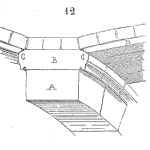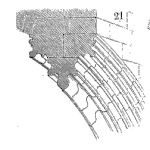
RCM is a process used to identify what Preventive Maintenance or Condition Based Maintenance you need to implement so you get the Reliability you need from your equipment.
[Read more…]Your Reliability Engineering Professional Development Site
Find all articles across all article series listed in reverse chronological order.
by Nancy Regan Leave a Comment

RCM is a process used to identify what Preventive Maintenance or Condition Based Maintenance you need to implement so you get the Reliability you need from your equipment.
[Read more…]by Sanjeev Saraf Leave a Comment

The following video desribes 2005 fire/explosion in Praxair’s gas cylinder filling and distribution center. The incident occurred when gas from a pressurized propylene cylinder was released through the relif valve and got ignited.
[Read more…]by Karl Burnett Leave a Comment

R. James Abernathy was a writer who specialized in flour and grain mills in the late 1800s. In 1880, he authored Practical Hints on Mill Building. Early in this 350-page technical manual, he wrote that millwright skill was declining. He thought the reason was that the millwrights were assembling mills from pre-fabricated components, instead of having to manufacture parts by hand. The manual was published in the United States and England, and remained an authority for several decades. It remains a reference for assessing mills for their historic value, such as applications for national historic registers.
[Read more…]
The way we communicate information has undergone a significant transformation. Traditional writing has given way to a more concise and engaging writing style on social media. This brief article provides six ways that social media has improved my business writing.
I use subheadings selectively in traditional writing. Selectively means maybe one subheading per 3 to 5 paragraphs. Social media teaches us that subheadings serve as signposts, guiding readers to the information they seek, improving readability, and enhancing the overall user experience. I know to use a subheading for every 1 to 2 paragraphs.
[Read more…]by Greg Hutchins Leave a Comment

In project management we can’t always be in control of the environment around us. We can only forecast rather than predict risk and despite our ‘reasonable’ or even ‘best’ efforts to mitigate risk; shit happens and emergencies ensue! It’s not just physical emergencies but also those related to time and cost; remember overbudget or late projects can create an emergency for shareholders and stakeholders alike.
Maybe it’s because we tend to look at the ‘big risks’ or the ‘top ten’ after some semiquantitative assessment but then fail to consider that risks can change with time as more information becomes available. Or, maybe it is because only those risks that can be clearly defined and are ‘likely’ are communicated to the eyes and ears on the ground. Those low probability, high impact risks can tend to slip under any risk radar.
[Read more…]by Mike Sondalini Leave a Comment

To not have a problem you must prevent its creation. Once a problem exists you can never stop it repeating until all its roots are eliminated. Doing Root Cause Analysis (RCA) on a problem to try and prevent it has a miniscule chance of working because you can never find all the roots of its cause. The roots you do not eliminate will let the problem grow again.
[Read more…]by Larry George Leave a Comment

Fred wrote, “I would like to suggest that you continue writing articles – make them more tutorial in nature as if teaching someone the stats from scratch that you use in your articles. Instead of loads of references to papers and procedures, explain the concepts and math involved.” OK, I’ll try.
Nonparametric field reliability estimators require no unwarranted distribution assumptions and they preserve all information in data. Here’s how to compute them, without life data, while preserving all relevant information in ships and returns counts.
[Read more…]by Sanjeev Saraf Leave a Comment
by André-Michel Ferrari 2 Comments

One of the most valuable tools for a Reliability Engineering team is an asset life model repository or Library. This is also known as the Weibull Library. It contains the life models for all the critical assets in the organization. This information is crucial for failure prediction and ultimately decision making in the domain of asset management. It is the company’s own and true version of a “failure database”. It avoids the use other generic external databases that might not reflect the true behavior of the assets in the organization.
[Read more…]by Mike Sondalini Leave a Comment

THE BUSINESS RISK EQUATION SHOWS YOU HOW MUCH YOU WILL LOSE FROM ANY FAILURE EVENT
THE COMPLETE BUSINESS RISK EQUATION EXPLAINS WHAT INFLUENCES YOUR CHANCE OF SUCCESS IN BUSINESS
—
Risk = Consequence x Opportunity x Uncertainty of the Opportunity
One of the most important business equations of them all is the full form of the business risk equation shown above.

The majority of companies today outsource a major portion (up to 60-70%) of their work scope to subcontractors. As a result, the subcontractors become a risk to your project because you have no direct control over them. For example, if they start to slip their schedule you cannot direct them to put more assets on the job to pull the schedule back. The other risk that is not obvious is that posed by your subcontractors major vendors or subcontractors. To illustrate this point, this article describes a story that I was personally involved in.
by Nancy Regan Leave a Comment

Doing Reliability Centered Maintenance (RCM) helps us take care of our equipment. And, taking care of our equipment is very much like taking care of ourselves.
[Read more…]by Carl S. Carlson Leave a Comment
An “Inside FMEA” reader recently asked a question on the subject of Process FMEAs, specifically whether assigning the cause as “operator error” is useful. This article will share insights into the nature of a cause in Process FMEA, and whether describing cause as “operator error” adds value.
Fred and I podcasted on this topic. Link to the podcast is here.
I’ve seen literally hundreds of Process FMEAs that list “operator error” as the cause of a process related failure mode. Let me be as clear as I can. Assigning “operator error” as the cause in a Process FMEA does not add value. I’ll explain. [Read more…]
by Sanjeev Saraf Leave a Comment

A few weeks ago [note: written in August 2010], Senator Frank Lautenberg proposed Secure Chemical Facilities Act (S. 3559) to the Senate committee on Homeland Security. The bill mandates Inherent Safer Technology (IST) or Inherently safer design (ISD) at high-risk chemical facilities.
Knowing the uncertainties surrounding the mere definition of inherent safety, one could say that it is preposterous to mandate IST. IST cannot be regulated and worse it would burden the industry. To a large extent this is true.
[Read more…]by Robert (Bob) J. Latino Leave a Comment

I’ve been in the Reliability and RCA space now for 38 years now (yes, I’m old 😊), but recently I’ve had a major change in perspective. For 37 of those years my family owned and ran a business (Reliability Center, Inc) that offered training, consulting, and software in the Root Cause Analysis (RCA) space. We developed and created the PROACT® RCA Methodology & Software which has been adopted by many Fortune 500 and Global 1000 companies. However, in 2019, we enacted succession plans as we (my brothers, sisters, and I) approached retirement ages. We sold RCI in 2019.
NOW comes the perspective change, I am not an RCA provider anymore who is beholden to a proprietary brand, but I’m now an RCA consumer with deep domain knowledge of what the core principles of effective RCA are. In this paper, I would like to remove the RCA provider brand labels, and delve into ‘What makes any RCA effort, good versus great?” When we remove the labels and look at any investigative occupation, all the steps are basically the same. So, let’s explore together!
[Read more…]